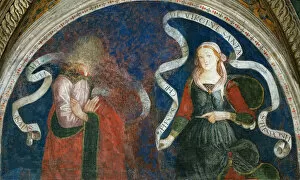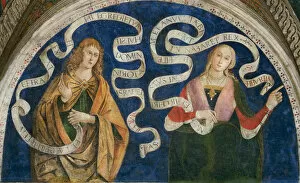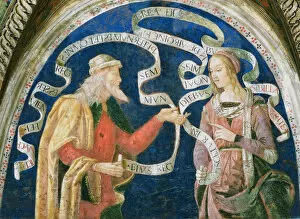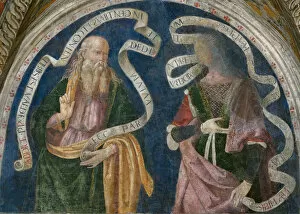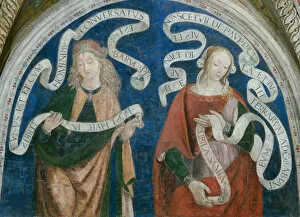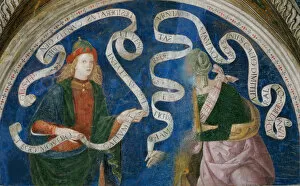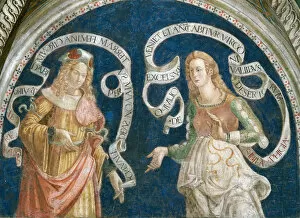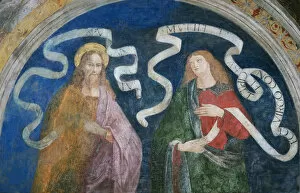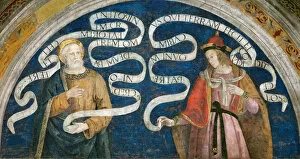Sala Delle Sibille Collection
The Sala delle Sibille, also known as the Room of the Sibyls, is a breathtaking masterpiece created by Michelangelo between 1492 and 1495
For sale as Licensed Images
Choose your image, Select your licence and Download the media
The Sala delle Sibille, also known as the Room of the Sibyls, is a breathtaking masterpiece created by Michelangelo between 1492 and 1495. This magnificent frescoed ceiling depicts various prophets alongside their corresponding sibyls, creating a harmonious blend of biblical and classical imagery. In one corner of the room, we find The Prophet Isaiah accompanied by the Hellespontine Sibyl. Their presence exudes wisdom and divination, symbolizing the connection between ancient prophecies and future events. Nearby stands The Prophet Micah with the Tiburtine Sibyl, embodying strength and foresight. Moving along this celestial panorama, we encounter The Prophet Amos joined by the European Sibyl. Together they represent knowledge transcending borders and cultures. Further down lies The Prophet Daniel accompanied by the Erythraean Sibyl – an intriguing combination that evokes mystery and revelation. As our gaze wanders through this enchanting space, we come across The Prophet Jeremiah standing beside Agrippine Sibyl; their solemn expressions hint at profound insights into humanity's destiny. Not far away stands The Prophet Obadiah with his counterpart from Libya - an unexpected pairing that sparks curiosity about hidden truths waiting to be unveiled. Continuing our journey through time and mythology within these walls, we discover Baruch - a prophet depicted alongside Samian Sibyl who represents prophecy rooted in ancient Greek traditions. And there is Ezekiel accompanied by Cimmerian Sybil whose presence adds an air of mysticism to this ethereal tableau. A little further on resides Haggai next to Cumaean Sybil - together they symbolize divine guidance leading mankind towards enlightenment amidst chaos. Then comes Jeremiah once again but now paired with Phrygian Sybil; their combined aura speaks volumes about fate intertwined with human choices. Finally, Zechariah appears alongside Persian Sybil, embodying the connection between Eastern and Western wisdom.

